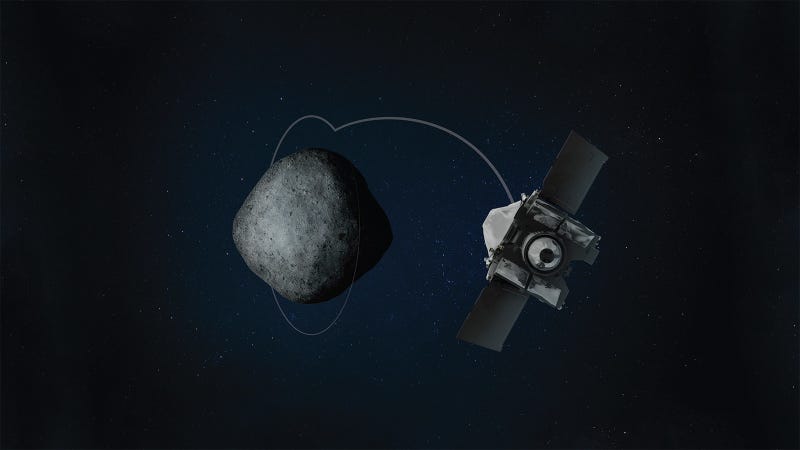 Artist’s concept of OSIRIS-REx arriving at BennuIllustration: Heather Roper/University of Arizona
Artist’s concept of OSIRIS-REx arriving at BennuIllustration: Heather Roper/University of Arizona
The new year has brought important milestones for two space missions—but only one of them deals in the very survival of the human species.
OSIRIS-REx, NASA’s asteroid-visiting spacecraft, performed its eight-second thruster burn, putting the craft into orbit around the asteroid Bennu. Bennu is now the smallest object a spacecraft has ever orbited.
OSIRIS-REx has been en route to Bennu since May 2016 and arrived early last month. The spacecraft will now orbit a mile from the center of the asteroid, according to an OSIRIS-REx team press release.
It’s hard work, orbiting such a small thing. As we’ve written, asteroids have slight and uneven gravitational fields. And indeed, OSIRIS-REx’s scientists didn’t have a final orbit fully planned until they arrived at Bennu. Since then, the craft flew by the asteroid several times for surveying, before preparing for and carrying out the insertion maneuver. The OSIRIS-REx team will need to continue adjusting the spacecraft to keep it in orbit.
It’s always exciting to arrive at a new solar system object. Two missions achieved important milestones this past New Year’s Eve and Day: OSIRIS REx orbited Bennu, and New Horizons flew by the Kuiper Belt Object (486958) 2014 MU69, nicknamed Ultima Thule, the furthest object ever explored by a human-built mission.
But I’m more interested in OSIRIS-REx, simply because I live on Earth. Asteroids could hold secrets about the environment in which our own planet formed. They might contain precious water or metals that could be useful one day as exploitable resources for space travel. And Bennu is a potentially hazardous object, meaning that its size and future trajectories make it worthy of further study in case it ever threatens the Earth. OSIRIS REx will explore these three topics and more.
Science will continue around Bennu, now from up close. OSIRIS-REx will map the asteroid to create 3D models that will help the team prepare for 2020, when the orbiter will attempt to touch down on the asteroid’s surface to collect samples. OSIRIS-REx is scheduled to return to Earth in 2023.
Share This Story